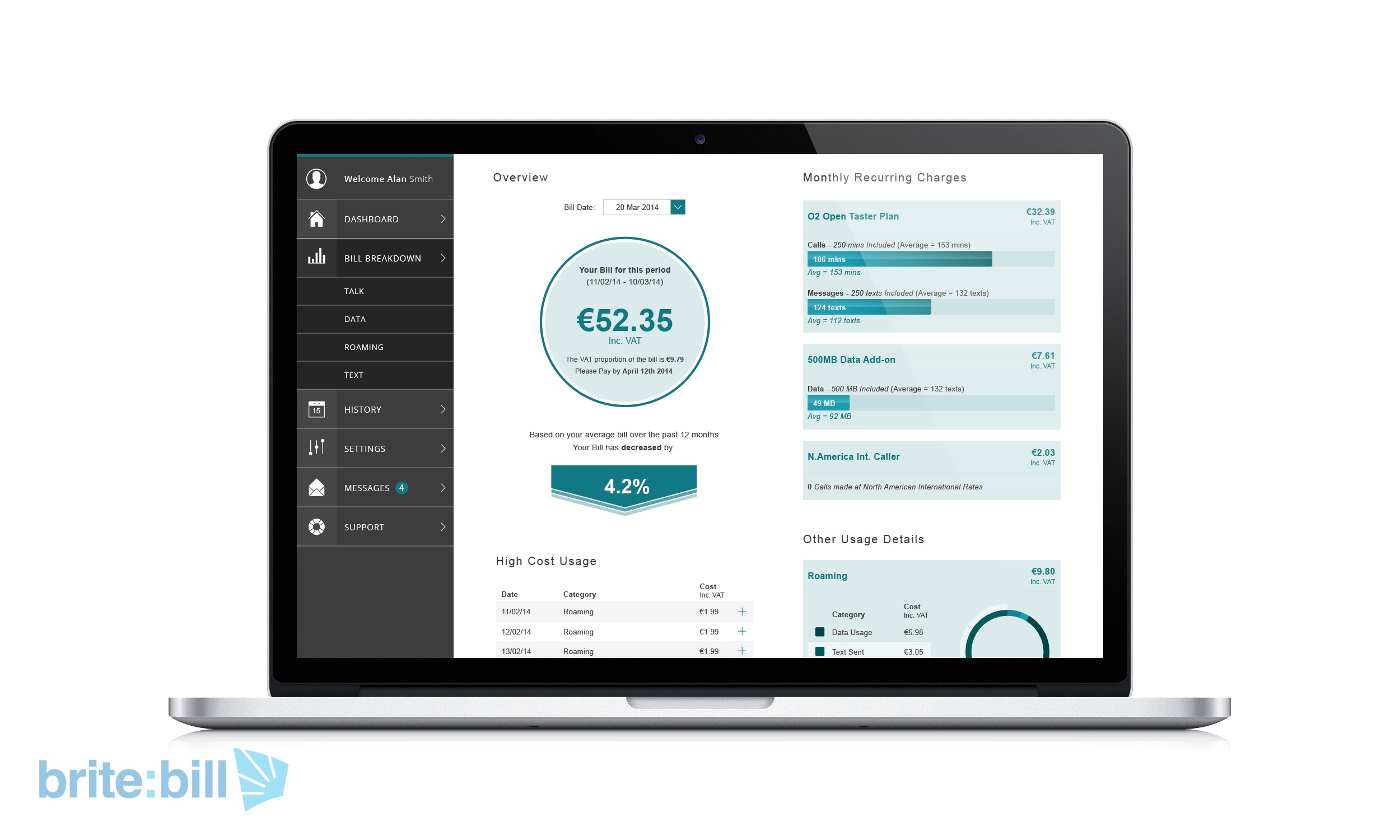The telecoms bill is both a foundation for the trust necessary to enable a sale and also an environment where sales messages can be personally tailored for each customer, bringing contextual relevance to the offer, writes Alan Coleman, the chief executive of Brite:Bill.
CSPs recognise that the bill is an underused mechanism for communicating with customers about new services and offerings and it is also at the heart of their relationships with their customers. However, many telecoms bills are an unappealing, black and white tally of consumption that do nothing to inform the customer of their usage or enable relevant, attractive offers to be made.
Broader service portfolios require better explanations, not just more columns on a page. As CSPs expand the range of services for which they bill customers, the impetus is on the CSP to make bills more transparent, more personalised and more human. Your bill will either be a major problem or a real asset.
The foundation of any sale is trust and transparency. If your bill is confusing and opaque to your customers the likelihood of them being interested in new services is greatly diminished. As a customer, why would you buy more from a company when the bill you’re paying for what you already take from them looks like a print off from a 1980s green screen?
With the increased importance of the bill to the future of CSPs’ businesses, we’ve identified four distinct stages on the journey to better billing. In my experience, these stages help CSPs assess their current state and provide a path towards transforming their most important communication into their very best communication.
The first stage is the base level – generic bills. These result in every customer getting the same type of bill, with bills tightly coupled to the billing engine and these are difficult to change. Generic bills are the prime driver of billing-related calls to customer care.
The second stage involves building trust and transparency which can start to be achieved with improved bill design and by applying the principles of an information architecture to the bill. Such bills are highly flexible, easy to change and enable CSPs to drive continuous improvements.
The next stage, the third, is for the billing communications to become proactive and pre-emptive. Dynamic personalisation enables bills to be changed based on what is in the billing data and other adjacent systems. Such bills are proactive and tailored for each recipient and that means contextual, situationally-aware cross-selling on the bill can be successful.
 The final stage, the fourth, is billing with an emphasis on developing the customer relationship over time. This sees atomic, enriched, personalised billing data made available in a real-time application programming interface (API) to power other customer experiences that require usage data. In addition, such billing communications should be ready for next generation support and marketing such as chat bots or voice artificial intelligence.
The final stage, the fourth, is billing with an emphasis on developing the customer relationship over time. This sees atomic, enriched, personalised billing data made available in a real-time application programming interface (API) to power other customer experiences that require usage data. In addition, such billing communications should be ready for next generation support and marketing such as chat bots or voice artificial intelligence.
Moving through the four stages will transition a CSP bill from being an unfriendly demand for cash to a rich, warm medium that informs the user about their consumption and makes valuable suggestions about how to improve the experience they receive from their CSP. It is now time for CSPs to stop ignoring the bill as a platform for strengthening their relationships with their customers, after all, it’s one CSP communication that they’re certain to read.
The author of this blog is Alan Coleman, the chief executive of Brite:Bill.
Comment on this article below or via Twitter: @ VanillaPlus OR @jcvplus






